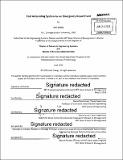| dc.contributor.advisor | David Simchi-Levi and Vivek Farias. | en_US |
| dc.contributor.author | Chang, Josh (Josh Woolim) | en_US |
| dc.contributor.other | Leaders for Global Operations Program. | en_US |
| dc.date.accessioned | 2015-09-29T18:56:32Z | |
| dc.date.available | 2015-09-29T18:56:32Z | |
| dc.date.copyright | 2015 | en_US |
| dc.date.issued | 2015 | en_US |
| dc.identifier.uri | http://hdl.handle.net/1721.1/98979 | |
| dc.description | Thesis: M.B.A., Massachusetts Institute of Technology, Sloan School of Management, 2015. In conjunction with the Leaders for Global Operations Program at MIT. | en_US |
| dc.description | Thesis: S.M., Massachusetts Institute of Technology, Engineering Systems Division, 2015. In conjunction with the Leaders for Global Operations Program at MIT. | en_US |
| dc.description | Cataloged from PDF version of thesis. | en_US |
| dc.description | Includes bibliographical references (pages 113-114). | en_US |
| dc.description.abstract | In 2011, Michael Porter and Robert Kaplan - the godfather of modern managerial accounting and professor at Harvard Business School - said "There is an almost complete lack of understanding of how much it costs to deliver patient care, much less how those costs compare with the outcomes achieved." They also stated "U.S. healthcare costs exceed 17% of GDP and continue to rise" and "a fundamental source of escalating costs is the system by which those costs are measured" [1] In 2015, Beth Israel Deaconess Medical Center (BIDMC), a Harvard teaching hospital, and MIT's Leaders for Global Operations program partnered to address this cost measurement issue for BIDMC's Emergency Department (ED). The joint team developed a cost accounting model and implemented it as a software system. Using the resulting system as a ruler for measuring cost of each patient visit, the ED is now able to assess cost of each visit, identify leverage points for cost reduction, and discover best practices from its own data. Most importantly, the ED is now making informed cost improvement decisions and can measure the impact of changes. This paper documents in detail how we developed the cost accounting model and implemented the cost accounting system at the BIDMC ED, so that other emergency departments may be able to benefit. | en_US |
| dc.description.statementofresponsibility | by Josh Chang. | en_US |
| dc.format.extent | 114 pages | en_US |
| dc.language.iso | eng | en_US |
| dc.publisher | Massachusetts Institute of Technology | en_US |
| dc.rights | M.I.T. theses are protected by copyright. They may be viewed from this source for any purpose, but reproduction or distribution in any format is prohibited without written permission. See provided URL for inquiries about permission. | en_US |
| dc.rights.uri | http://dspace.mit.edu/handle/1721.1/7582 | en_US |
| dc.subject | Sloan School of Management. | en_US |
| dc.subject | Engineering Systems Division. | en_US |
| dc.subject | Leaders for Global Operations Program. | en_US |
| dc.title | Cost accounting system for an emergency department | en_US |
| dc.type | Thesis | en_US |
| dc.description.degree | M.B.A. | en_US |
| dc.description.degree | S.M. | en_US |
| dc.contributor.department | Leaders for Global Operations Program at MIT | en_US |
| dc.contributor.department | Massachusetts Institute of Technology. Engineering Systems Division | |
| dc.contributor.department | Sloan School of Management | |
| dc.identifier.oclc | 921154206 | en_US |
